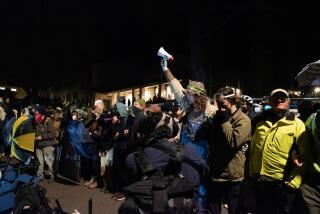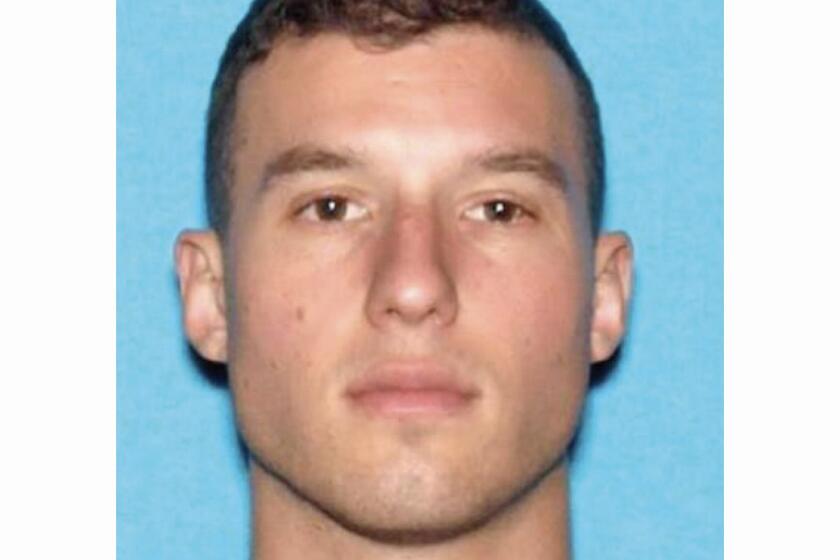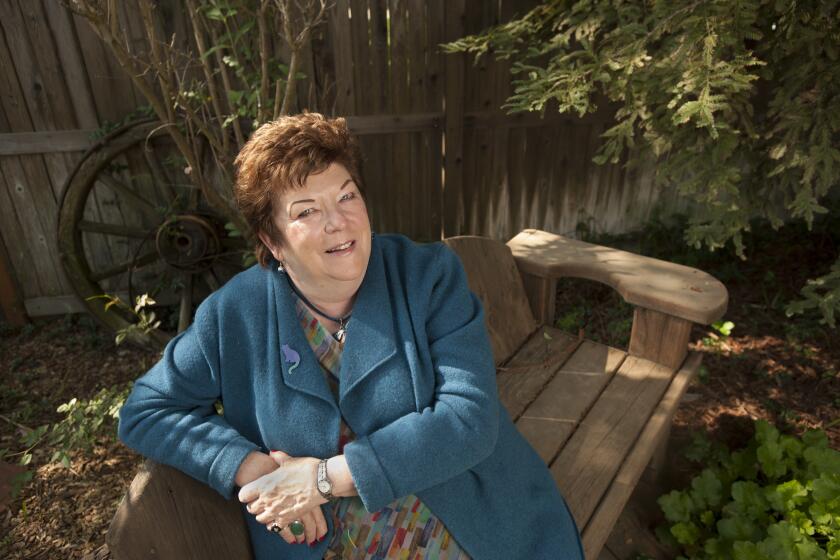Peace Talks : Pastor Hailed, Assailed on Summit to Negotiate Gang Truce
He has walked through hellish neighborhoods of dope dealers, proclaiming, “Up with hope! Down with dope!” He has led self-styled “Jesus sweeps” through gang-infested housing projects, trying to offer young men another way. He has staged a mock funeral at City Hall to mourn victims of gang violence.
Charles Mims, pastor of the Tabernacle of Faith Baptist Church at 114th Street and Central Avenue in Watts, is a 50-year-old former boxer and recovering alcoholic who fell into the gutter as a young man but rose to become a flamboyant symbol of the inner-city clergy’s street-level fight against gangs and drugs.
Mims has drawn high visibility and cynical derision by moving his pulpit to the pavement. In recent days the compliments and criticism have been particularly strong as the raspy-voiced pastor trotted out his latest effort: a “summit” among rival street gangs. Under his auspices, and with help from a number of other ministers, eight members from several of Los Angeles’ black street gangs sat down in private late Tuesday afternoon in a motel in Carson and began to talk.
In a city desperate for an answer to its gang problems, Mims’ announcement of the summit late last week drew substantial newspaper and television coverage. By largely overlooking the fact that similar peace talks between rival gang members have been tried over the years without success, the stories implied that progress might be at hand.
Summit Called Counterproductive
Over the weekend some of the city’s most prominent experts on street gangs argued that Mims’ summit would be counterproductive because it gave the impression that peace between gangs could be reached simply by talking.
For one thing, these experts contended, the traditional cycle of violence between gangs is heavily exacerbated by the cocaine business, a fact that will not change until job training and employment opportunities become more readily grasped alternatives to drug selling. For another, they said, with nearly 300 black gangs in Los Angeles County, it is unrealistic to imply that any eight gang members hold the key to peace. While the eight gang members are divided between Bloods and Crips, the two large affiliations that all black gangs claim, the fact is that there is nearly as much violence these days between rival Crip gangs as between Bloods and Crips.
“This is a farce,” said Chilton Alphonse, executive director of the Community Youth Sports and Arts Foundation, which works with gang members.
Anthony Essex, president of the Los Angeles chapter of the National Assn. for the Advancement of Colored People, said such criticisms prompted his organization to withdraw its support of Mims’ summit.
“We suggested he use the word ‘dialogue’ rather than suggesting these were going to be ‘truce’ talks because (Mims) had nothing to offer” the gang members. “If they make a bunch of promises they can’t keep, those guys (gang members) will never come back to the table,” Essex said.
Sen. Diane Watson (D-Los Angeles), whose district includes parts of South Los Angeles, said through a spokesman that she is “concerned about premature media focus on the negotiations because of the need to avoid sending gang members the message that they can expect to be treated like ambassadors from warring nations, complete with television interviews and surrounded by public officials.”
Mims said he did not know what the talks would lead to and declined comment when the first day’s talks ended after an hour. The gang members may, or may not, need the three days he has reserved for them at the motel, he said.
Mims acknowledged that the eight gang members are not necessarily “leaders” but young men who have “influence” in their gangs.
The most important step, Mims said, is to begin talking.
“The point is not waiting until you can find the titular leader,” he said. “The problem is to start now! I hear a lot of talking, but what’s important is to tackle this problem. We’ve been waiting long enough. We can’t wave a magic wand and guarantee everything will be OK in the morning, but we’re trying. . . . We’re starting the ball rolling. If we miss we’re just going to keep on.
Miserable Beginnings
“One reason I’m out there working with young people is that God turned me around. I was there. I went all the way to eating out of a garbage can, drinking rubbing alcohol,” said Mims, who said he suffered from kidney failure as a result of his drinking. “I had no father, I was addicted to alcohol as a baby, and I was turned around, and in some of those gangs there are young scientists who can somehow discover the cure for AIDS.”
Rev. Otto McClinton, pastor of St. Thomas Baptist Church in the Crenshaw district, said Mims brings a credible presence because his 800-member church “is in a hotbed, because he understands gangs and has several young clergymen who understand them and work with them, and because Mims realizes the clergy has put down the gangs in the past. What he’s emphasizing is that these are our children, and we have to focus on that relationship.”
Mims, who came here six years ago after pastoring churches in Louisville and is a former national vice president of the politically conservative Religious Roundtable organization, an early component of the Christian “new right” movement, is taking a decidedly more aggressive approach to the gang problem than most of Los Angeles’ black clergy. Leaders of many of these churches say they have not formally organized to push for peace among rival groups. Rather, they said, they have focused church resources on keeping younger children from joining gangs.
“At this point we operate from the standpoint of offering alternatives to gang involvement for young people who are not involved,” said Rev. Edgar E. Boyd of the 1,500-member Bethel African Methodist Episcopal Church in Southwest Los Angeles. Boyd said he applauds Mims’ efforts.
Rev. Cecil L. Murray of the First African Methodist Episcopal Church said his 4,200-member church plans to set up a gang deprogramming network that will extend from San Diego to Seattle. The church has started a pilot program that brings hard-core youth together in “self-image” workshops and has set up a job-finding computer and a summer work drive, he said.
Assemblywoman Maxine Waters (D-Los Angeles), whose district includes some of the city’s deadliest areas, said Mims’ efforts illustrate how some clergymen are straining to find ways to make a dent in the gang problem.
“What Rev. Mims is doing today is trying to figure out the role of the church. I don’t think anyone knows for sure what their role is yet. No one entity has the answer,” Waters said.
The most recent publicized attempt at a formal gang peace occurred two years ago under the auspices of Community Youth Gang Services, the county’s gang prevention arm. A treaty was drafted and was signed by a handful of gang members, with little visible result.
A more long-range program, called Project Longtable, was created by the city of Los Angeles in 1977, paying gang members to attend a series of arbitration conferences. The program fell apart under allegations of financial irregularities.
More to Read
Start your day right
Sign up for Essential California for news, features and recommendations from the L.A. Times and beyond in your inbox six days a week.
You may occasionally receive promotional content from the Los Angeles Times.






